As my last post was on a rather rare vintage Toshiba MK-1034FC from 1992, I decided it would be fitting to look at a more modern Toshiba in comparison. In this case, it’s from 2018!
The hard drive aficionados among you already know the deep history this drive design shares with Hitachi. Toshiba have kept it pretty true to the original design, however.

Drive Attributes ------------------------------------- Toshiba P300 HDWD110 ------------------------------------- Capacity 1TB Mfc Date 2018-03 Interface SATA Platters 1 Heads 2 RPM 7200 Protocol Serial-ATA/600 -------------------------------------
This is a drive I purchased new in 2018, initially for a workshop PC. I ended up throwing that machine into a corner and forgetting about it, so this drive is practically still brand new. After the Western Digital buyout of Hitachi and as HGST-branded drives became more and more hard to find, Toshiba was the next best option in terms of purchasing new drives for myself in the late 2010’s.
As Toshiba acquired many of Hitachi’s 3.5″ assets, including their factory in China, this drive is from one of their tried-and-tested designs. I have several of these and they’ve all been exceptionally reliable, Hitachi, HGST and Toshiba branded drives alike. The single platter design adds to the reliability factor here.
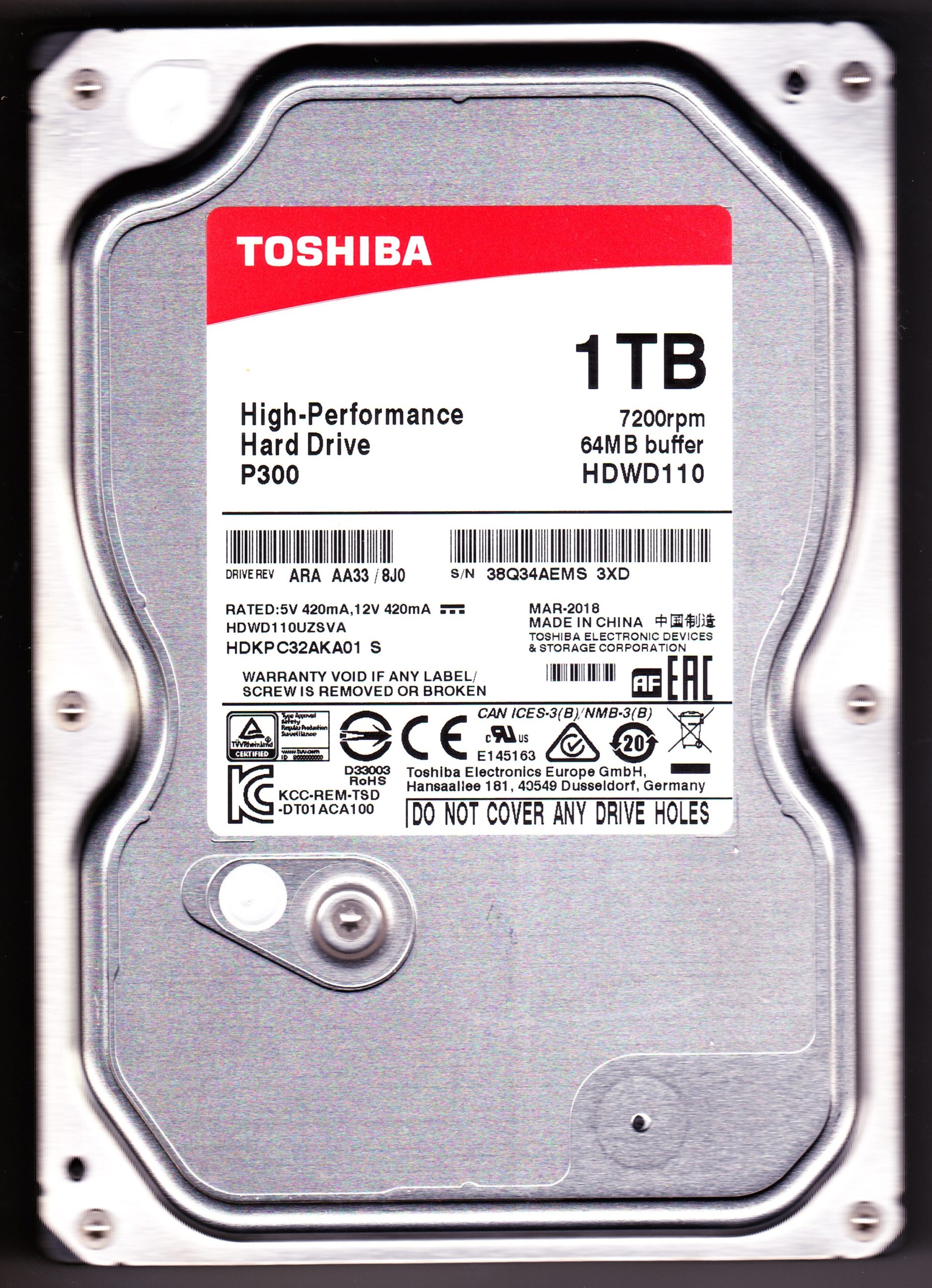
These drives are still fairly easy to pick up new, even in 2022. Albeit, there have been some minor label revision changes. This drive above has my favourite Toshiba-Hitachi hybrid style label, which they sadly changed relatively quickly. The layout of this label is excellent and borrows many elements from Hitachi-based labels.
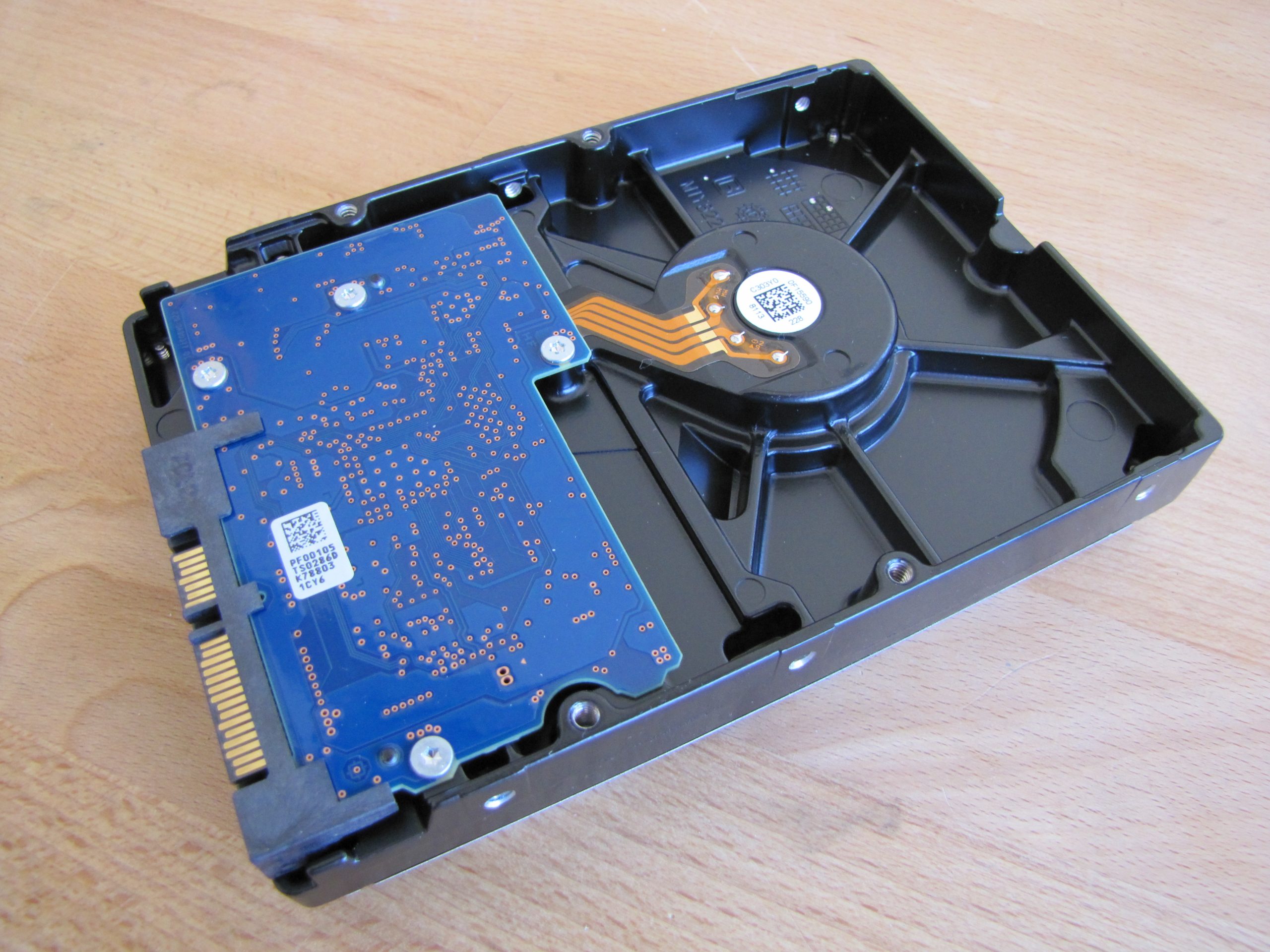
Much like the HDS721010DLE630 released by Hitachi, this drive has a flipped PCB in order to prevent component damage and to mitigate against ESD. In fact, the PCB itself remains practically identical to the aforemention HDS721010DLE630, which demonstrates how little work Toshiba has done to these drives. Clearly, Hitachi had it right.
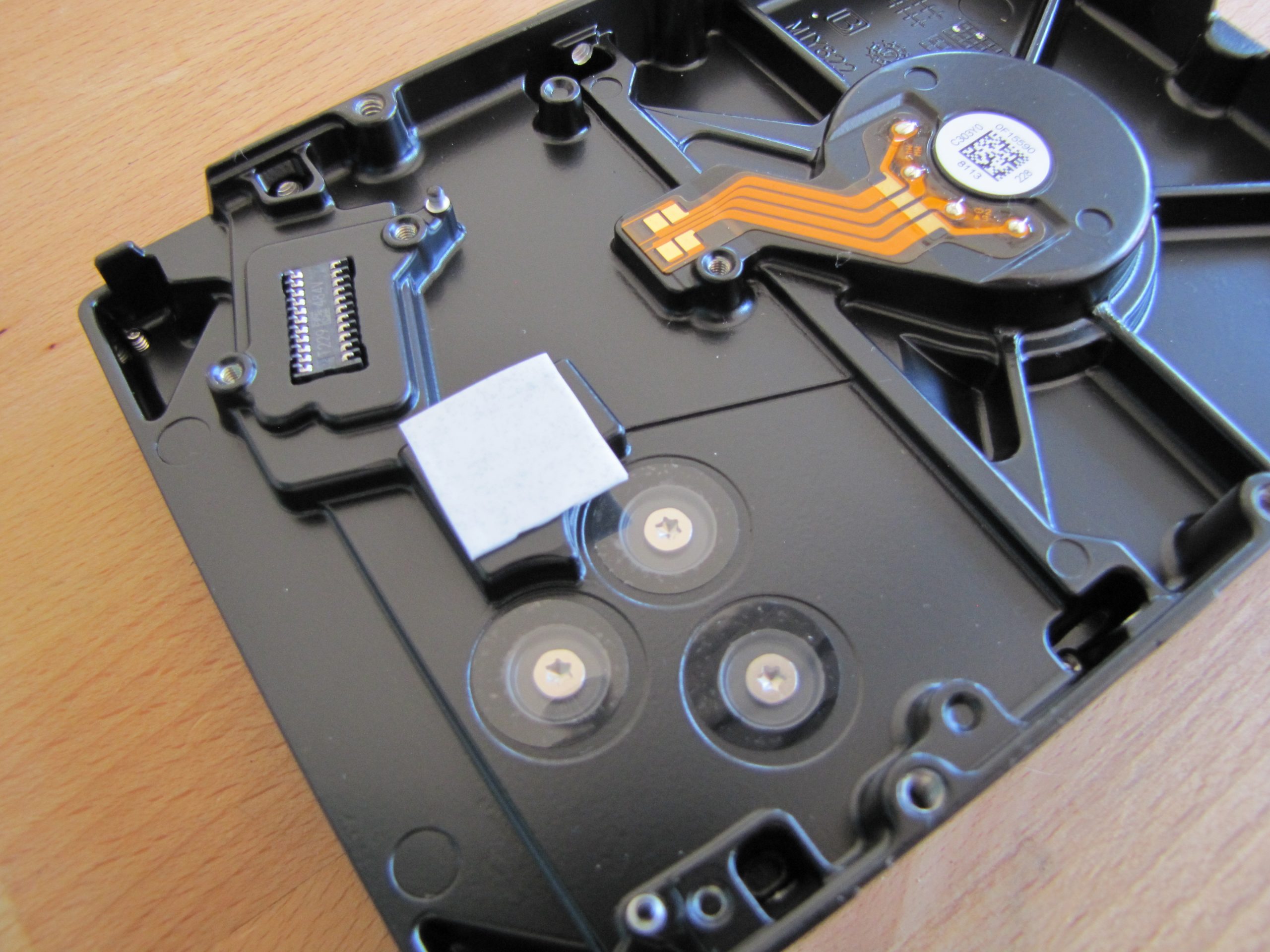
With the PCB removed, we can have a look at the underside of the drive. There’s a single pressure connection point to the PCB, connecting the head-stack assembly. Unlike on many earlier Hitachi and IBM based designs, the motor assembly is connected to the PCB through a pin-pressure system, as opposed to the previously used very delicate socket connector.
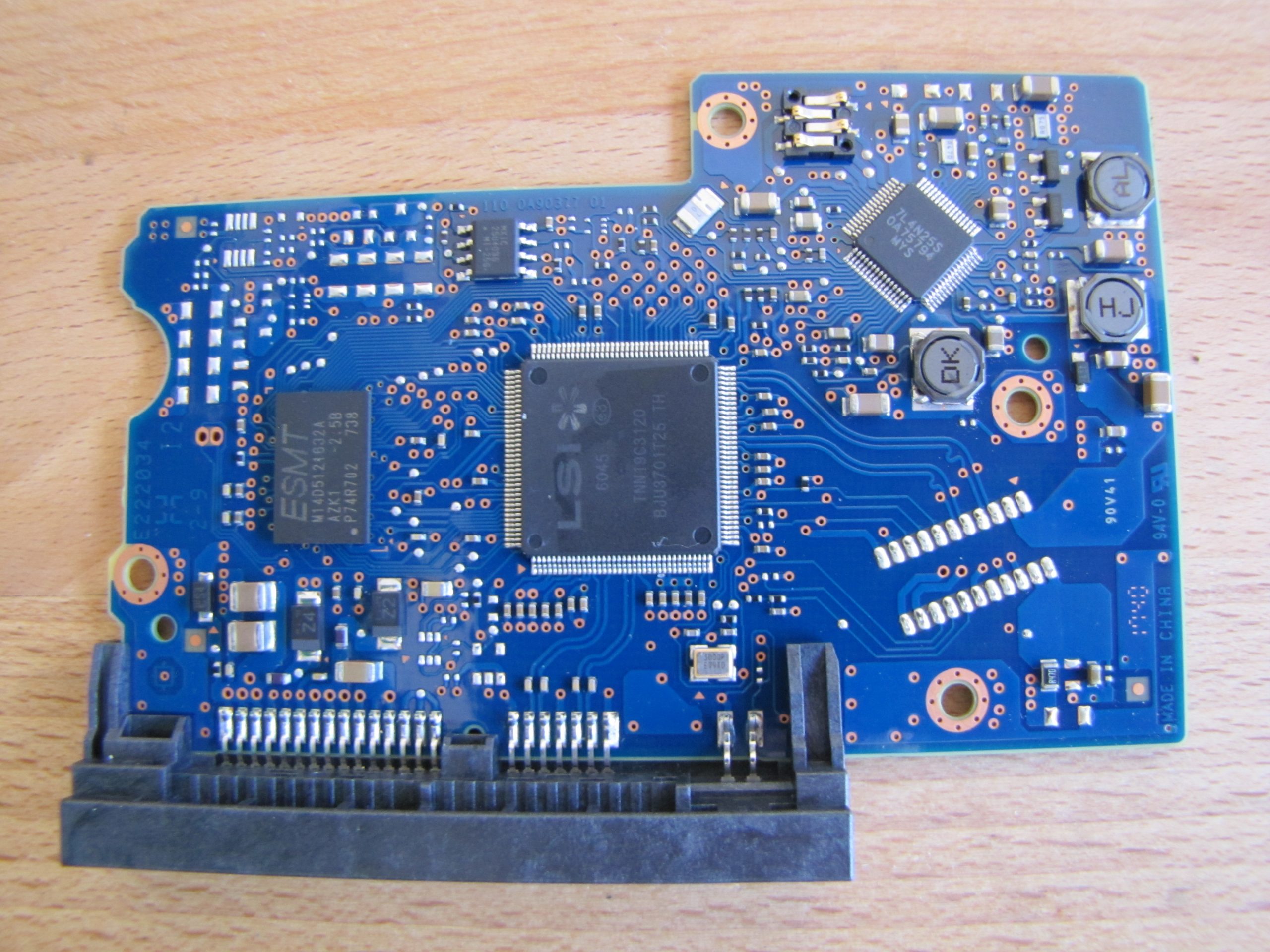
This PCB is fairly simple and highly integrated at this point and has barely changed at all. The IC OEM’s have remained the same, thus I expect Toshiba left most of the supply-chain intact from when they purchased Hitachi’s assets.
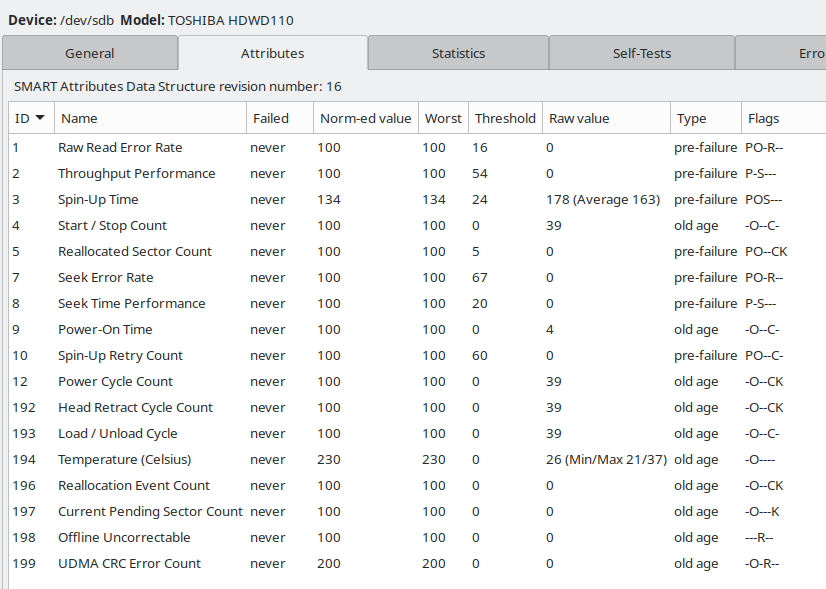
Obviously, it’s in great health since I’ve barely used it. While this isn’t the most interesting of drives, they’re certainly ones I would recommend over most in this current day and age.
Here’s a few extra files, for the curious:
Toshiba P300 Hard Drive Series – Product Datasheet (pdf)
If you missed the video I made on this drive, you can find it here: